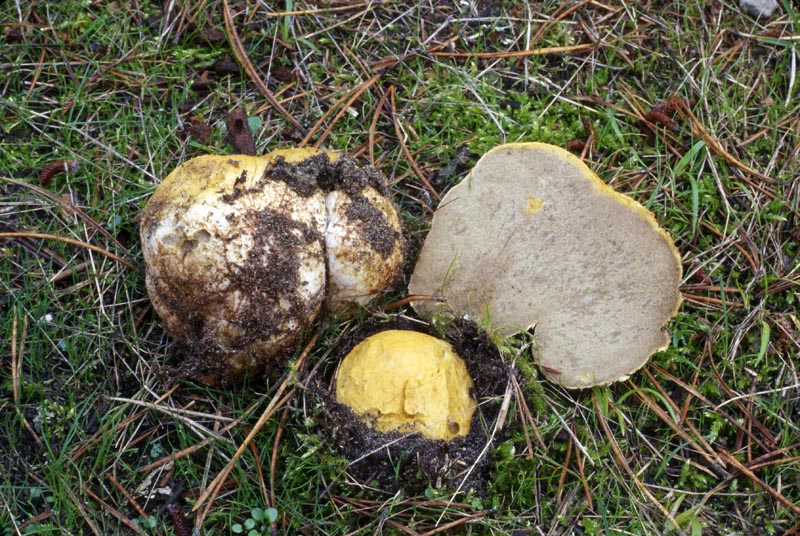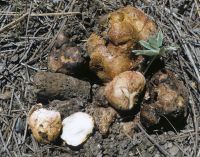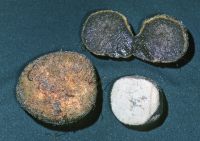Habitat: Pine and Douglas fir forests
Conservation Status: Not of concern
Rhizopogon is a large and difficult genus taxonomically, especially in western North America. In the PNW, rhizopogons are probably the most common false truffles in pine and Douglas-fir forests. They can be found throughout the year, often are completely hypogeous but can be found partially emergent, especially in loose soils along road edges where they can push up as clusters of fruitbodies. Somewhat surprisingly to most people, the closest relatives of rhizopogons are not other false truffles, but boletes in the genus Suillus. Likewise, suilluses are more closely related to rhizopogons than they are to other boletes. Rhizopogon occidentalis is a common representative of the genus. It has a yellowish white to yellow peridium, often with orange to red areas and a network of fine yellow to orange fibrils over the surface. The gleba is white to gray or yellow at first, then becomes some shade of olive or brown. At maturity the gleba is dry or somewhat powdery. The spores are smooth, thin-walled and often elongated to spindle-shaped. R. occidentalis occurs with two- and three-needle pines in the mountains and, especially, the pine woodlands on coastal dunes. Truffle experts rate it as “palatable.”
PNW Herbaria: Specimen records of Rhizopogon occidentalis in the Consortium of Pacific Northwest Herbaria database.
CalPhotos: Rhizopogon occidentalis photos.





